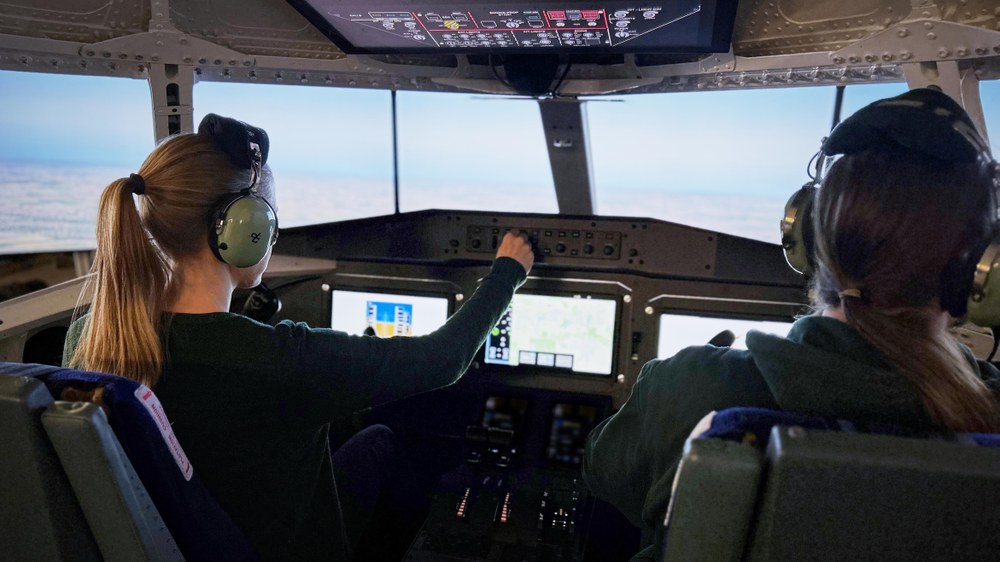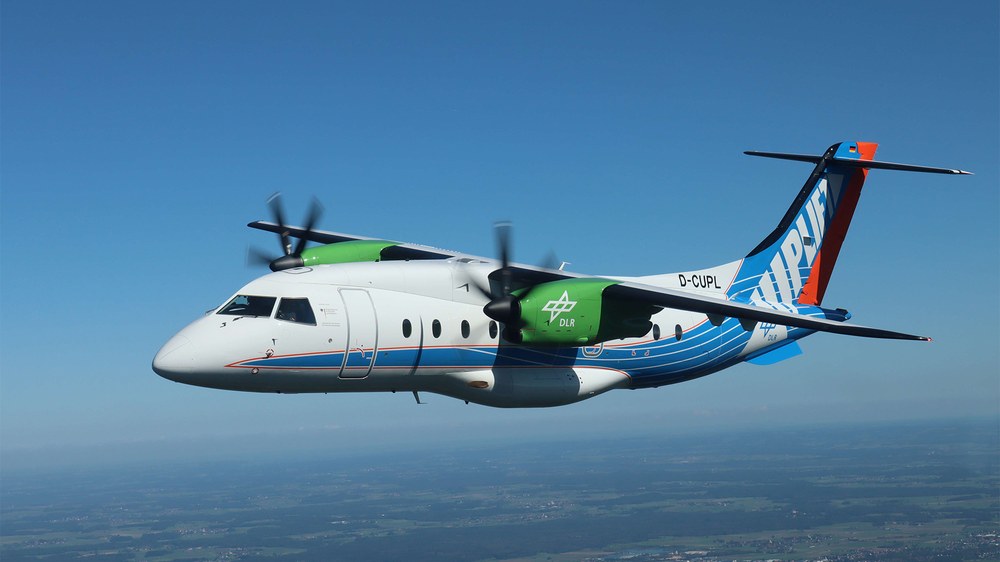DLR inaugurates new D328 cockpit simulator


- On 27 May 2025, the D328 cockpit simulator was officially put into operation.
- The new simulator – an exact replica of the Dornier 328 cockpit – expands the Air Vehicle Simulator (AVES) centre at DLR's Braunschweig site.
- It will support research flights using DLR's D328® UpLift research aircraft.
- Focus: Aviation
At the German Aerospace Center's (Deutsches Zentrum für Luft- und Raumfahrt; DLR) Air Vehicle Simulator (AVES) facility, researchers use realistic simulated cockpit replicas to investigate how pilots interact with state-of-the-art flight technology. On 27 May 2025, DLR officially inaugurated the new D328 cockpit simulator at its Braunschweig site in the presence of guests from research, industry and academia – expanding the scope of the simulation centre with this additional cockpit module.
The new simulator is a precise replica of the cockpit of DLR's Dornier 328 regional aircraft and will be used to support research flights using the DLR D328® UpLift research aircraft. Holger Duda from the DLR Institute of Flight Systems explains: "With the D328 cockpit simulator, we will further strengthen our collaboration with aircraft manufacturer Deutsche Aircraft – particularly when it comes to evaluating new technologies for turboprop regional aircraft."
As part of the UpLift project, DLR is equipping a Dornier 328 for use as a flying test lab. Researchers will use the D328 cockpit simulator to optimally prepare the aircraft for flight tests by conducting comprehensive ground-based tests of the aircraft's interfaces.
Integration into a wide range of research topics
What new systems are needed in the cockpit to operate regional aircraft with just one pilot, as safely as today with two pilots? What cost-effective solutions do 'fly-by-wire' technologies offer for smaller turboprop aircraft? How can flight safety be improved under icing conditions? To investigate questions like these, researchers will use the D328 cockpit simulator.
The CAvIA (Clean Aviation via Intelligent Avionics) research project, in collaboration with Deutsche Aircraft, aims to make aviation more environmentally compatible through intelligent avionics – electronic systems for flight control, communications and navigation. The project also investigates the potential for single-pilot operations in smaller regional aircraft. Another key area of focus is expanding the Low Noise Augmentation System (LNAS) – the pilot assistance system which enables quieter and more fuel-efficient approaches to turboprop aircraft.
The D328 cockpit simulator is also intended for other research projects. For example, the SPICE project (Sustainable Performance by Ice ProteCtion SystEm) is exploring methods for detecting icing conditions based on changes in aircraft performance parameters. The NewFLAire project (Next Generation Fly-by-Wire for Regional Aircraft) is investigating cost-effective applications of fly-by-wire technology – flight control systems that replace traditional mechanical connections with an electronic interface – in smaller turboprop aircraft.
These projects are funded by the German federal government under the LuFo Climate aviation research programme for climate-compatible aviation.
Simulating reality
DLR has invested approximately 2.5 million euros in the new cockpit module. It features original manufacturer components such as the cockpit shell, pilot seats, pedals and the control yoke – used to steer the aircraft. In addition, the cockpit includes an eight-channel force-feedback system and a state-of-the-art avionics system, making it well suited for developing new technologies for the D328.
Including the visual system and operator workstation, the simulator weighs approximately 2.3 tonnes.
Aircraft manufacturer Deutsche Aircraft has an identical development simulator to provide an ideal infrastructure for close collaboration.
